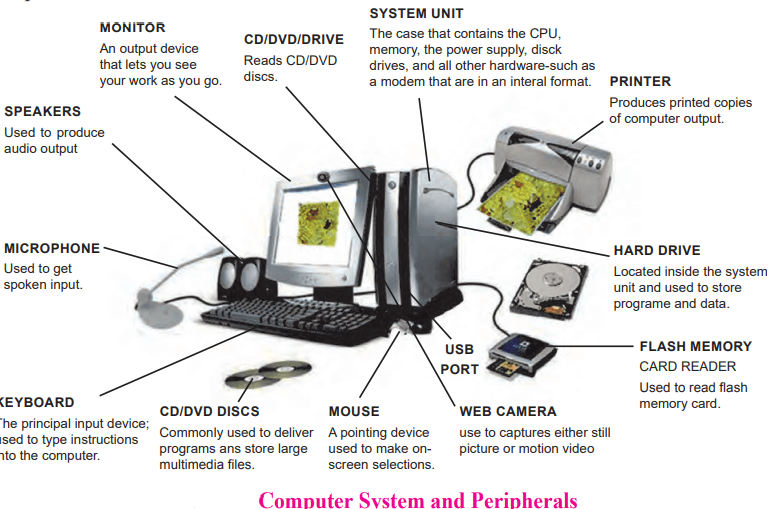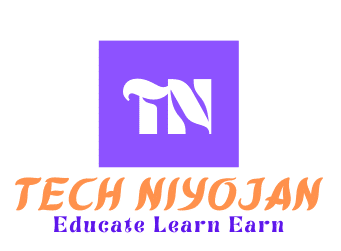In this post, you will find the Exercise Solutions for your 1st chapter Basics of Information Technology of class 11 HSC IT Maharashtra Board New Syllabus 2024-25.
Exercise Solutions class 11 Hsc IT chapter 1 Answer the Following
Q1. What is Data and Information? Give examples of data and Information?
Ans:
Data: A data can be a character, number, text, word, or raw facts.
Example:
Post sea, 23456, Ashok jadhav, Dp Road,
Mumbai, 9800011111, 456362.
Information: Information is nothing but data formatted in a representational manner that allows it to be utilized by human beings in a particularly significant way.
Example:
Ashok jadhav, 23456, , Dp Road, post sea 456362,
Mumbai, 9800011111.
Q2. Explain functional units of a computer system?
Ans:
Computer System: A computer can process data, images, audio, video, and graphics. It accepts data or instructions as input and stores data. It controls all operations inside a computer.
Computer Architecture is a specification of how a set of software and hardware technology standards interact to form a computer system.
A Computer system has the following three basic components:
- Input Unit
- Central Processing Unit
- Output Unit
Input Unit: It helps users to enter data and commands into a computer system. Data can be form of numbers, words, actions, commands, etc. Its function is to direct commands and data into computer. for example keyboard, mouse, scanners etc.
CPU-Central Processing Unit
After recieving dta and commands from computer system has to process it according to the intructions given by CPU.
It has three elements:-
Arithematic Logic Unit
This part of CPU performs arithematic operations. It does basic mathematical calculations like addition, substraction, division and multiplication, etc. It can even perform logical fuctions like the comparision of data.
Control Unit
This unit is the back bone of computers. Itis responsible for coordinating tasks between all components of a computer system.
The control unit collects data from input units and sends it to processing units depending on its
nature. Finally, it further transmits processed data to output units to facilitate users.
Memory Unit
It is the storage of data entered by the user using input devices such as a keyboard that stores this data in a memory unit which is called a computer system storage unit. This memory unit uses a set of pre-programmed instructions to further transmit this data to other parts of the CPU.
Types of Memory– There are two types of memory
- Primary Memory
- Secondary Memory
Types of Primary Memory are-
a) RAM – that stand for Random Access Memory. RAM is also known as read/write memory. It is generally reffered to as main memory of the computer system which is temperory . Being known as Volatile memory it loses its memory as the power suppply to the computer system switched off.
b) ROM – stands for Read-Only Memory is a Permanent type of memory. It a Non-Volatile memory as the content is not lost after the computer is switched off. Content of ROM is decided by the computer manufacturer at the time of manufacturing and it cannot be overwritten.
Secondary Memory
It is an external memory of the computer used to store a huge amount of different programs and information.
The secondary storage devices are :
- Magnetic (Hard) Disk
- Magnetic Tapes
- Pen Drive
- Flash memory
- Optical Disk (CD,DVD)
Output Unit
This is the final component of a computer system. After processing of data, it is converted into a format which human can understand. After conversion, the output unit displays this data to users. Example: monitors, projectors, printers, speakers, etc.


For the remaining “Exercise Solutions of chapter Basics of Information Technology class 11, IT Q1 to Q9 you can watch youtube video uploaded in this youtube channel and subscribe to Techniyojan click the link for the video
Q3. What is storage unit? Explain types of primary memory storage?
Ans:
Storage Unit: It is the storage of data entered by the user using input devices such as a keyboard that stores this data in a memory unit which is called a computer system storage unit. This unit uses a set of pre-programmed instructions to further transmit this data to other parts of the CPU.
Types of Memory – There are two types of memory storage
- Primary Memory
- Secondary Memory
Types of Primary Memory are-
a) RAM – that stand for Random Access Memory. RAM is also known as read/write memory. It is generally reffered to as main memory of the computer system which is temperory . Being known as Volatile memory it loses its memory as the power suppply to the computer system switched off.
b) ROM – stands for Read Only Memory is a Permanent type of memory. It a Non-Volatile memory as the content is not lost after computer being switched off. Content of ROM is decided by the computer manufacturer at the time of manufacturing and it cannot be overwritten.
Q4. Explain how linux is different from Windows?
Ans:
- Linux is Open source free operating system whereas Windows is a licensed commercial operating system.
- Linux is free from viruses as it need not required to install antivirus software but in Windows antivirus software is required.
- Linux has access to source code that can alter the code as per user needs whereas the windows operating system does not have access to source code.
- Linux software is open to the public and it constantly updates, improves as it is flexible and easily customizable.
Q5. Write down the differences between LAN, WAN, MAN?
Ans:
| LAN | MAN | WAN |
| LAN stands for Local Area Network | MAN stands for Metropolitan Area Network | WAN stands for Wide Area Network |
| LAN covers a smaller geographical area (limited size to a few km..) | MAN is larger than that of a LAN and smaller area as compared to WAN | WAN extends over a larger geographical area |
| It is easy to setup | It is hard to design and maintain | – |
| It is less expensive | – | Technology is high speed and expensive |
| Used in buildings, offices, schools | It connects two or more separate computers in the same or different cities | It might be confined within the bounds of a state or country |
HSC IT Reduced Syllabus class 11 Read More
HSC IT Paper Pattern new syllabus Read More
HSC IT 12th SOP Solutions Read More

4 thoughts on “Exercise Solutions Basics of Information Technology class 11 HSC IT”